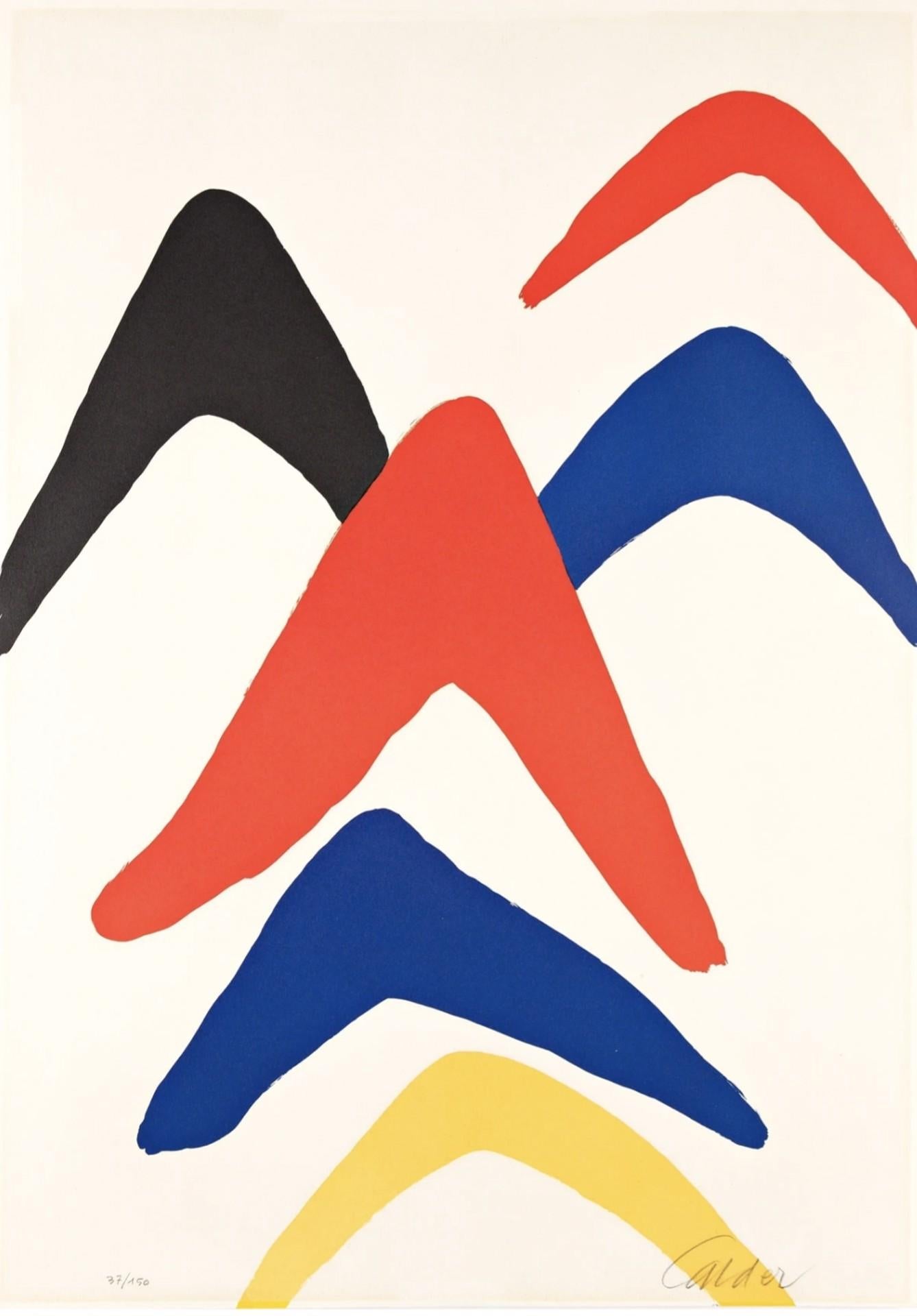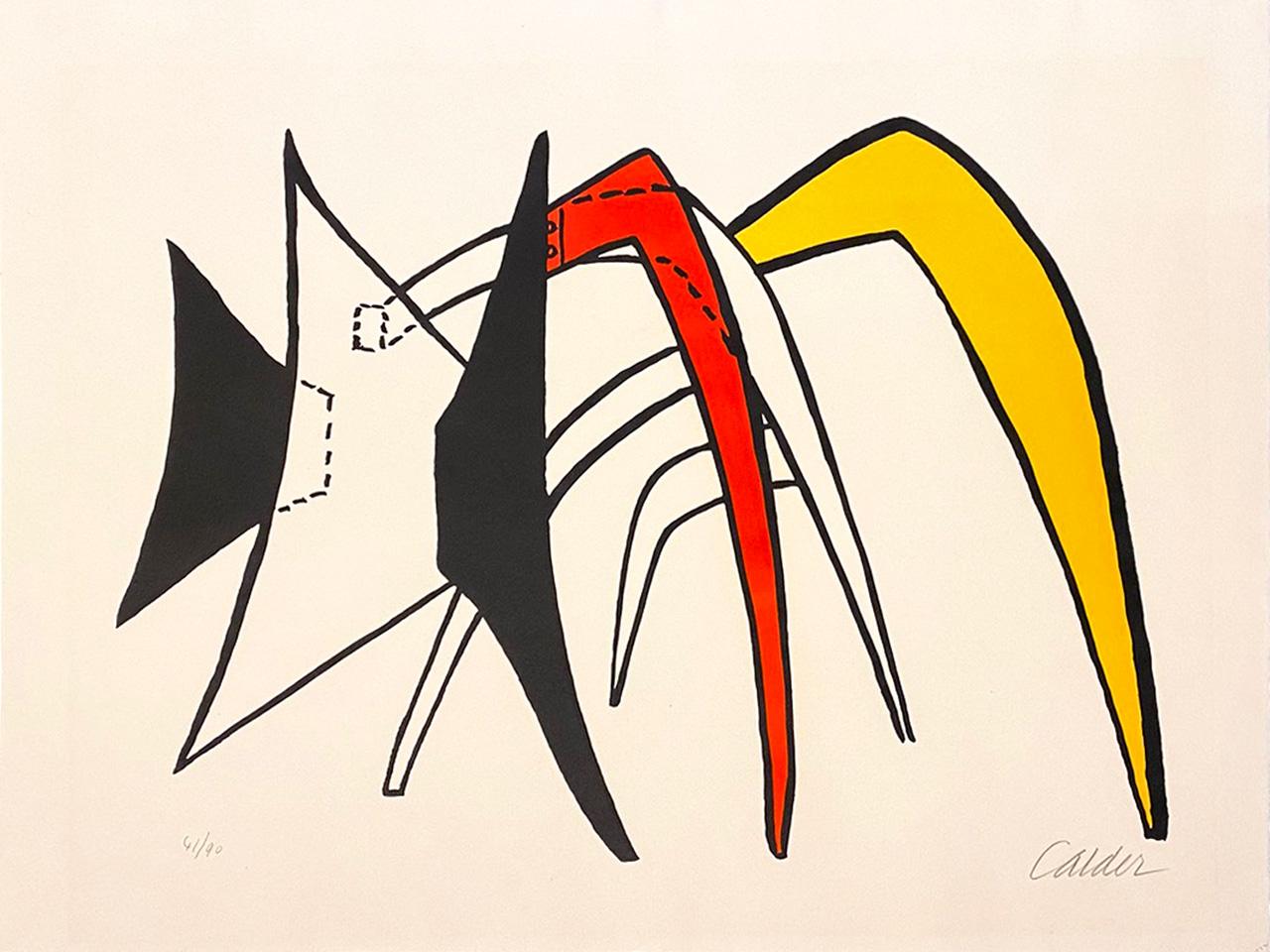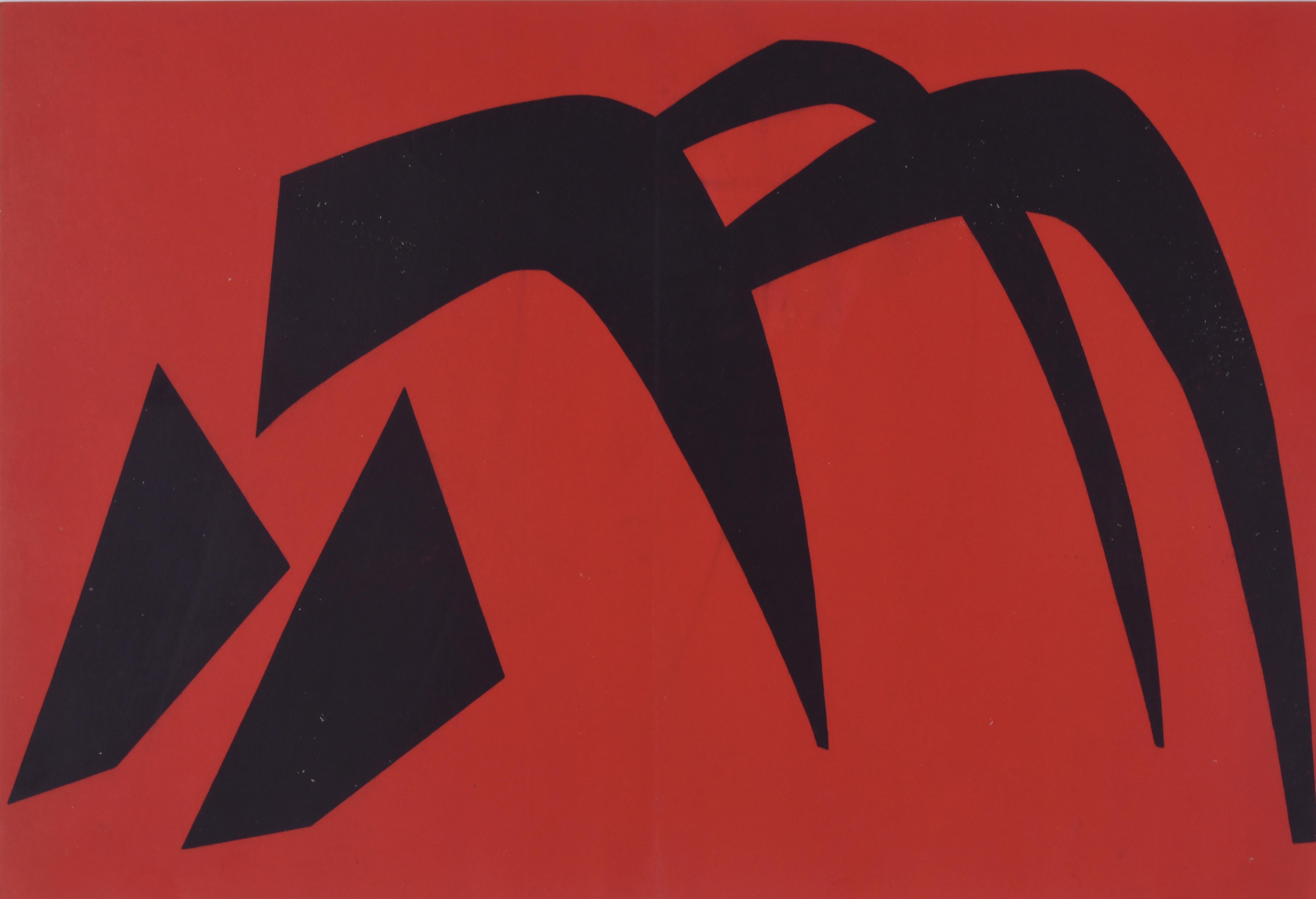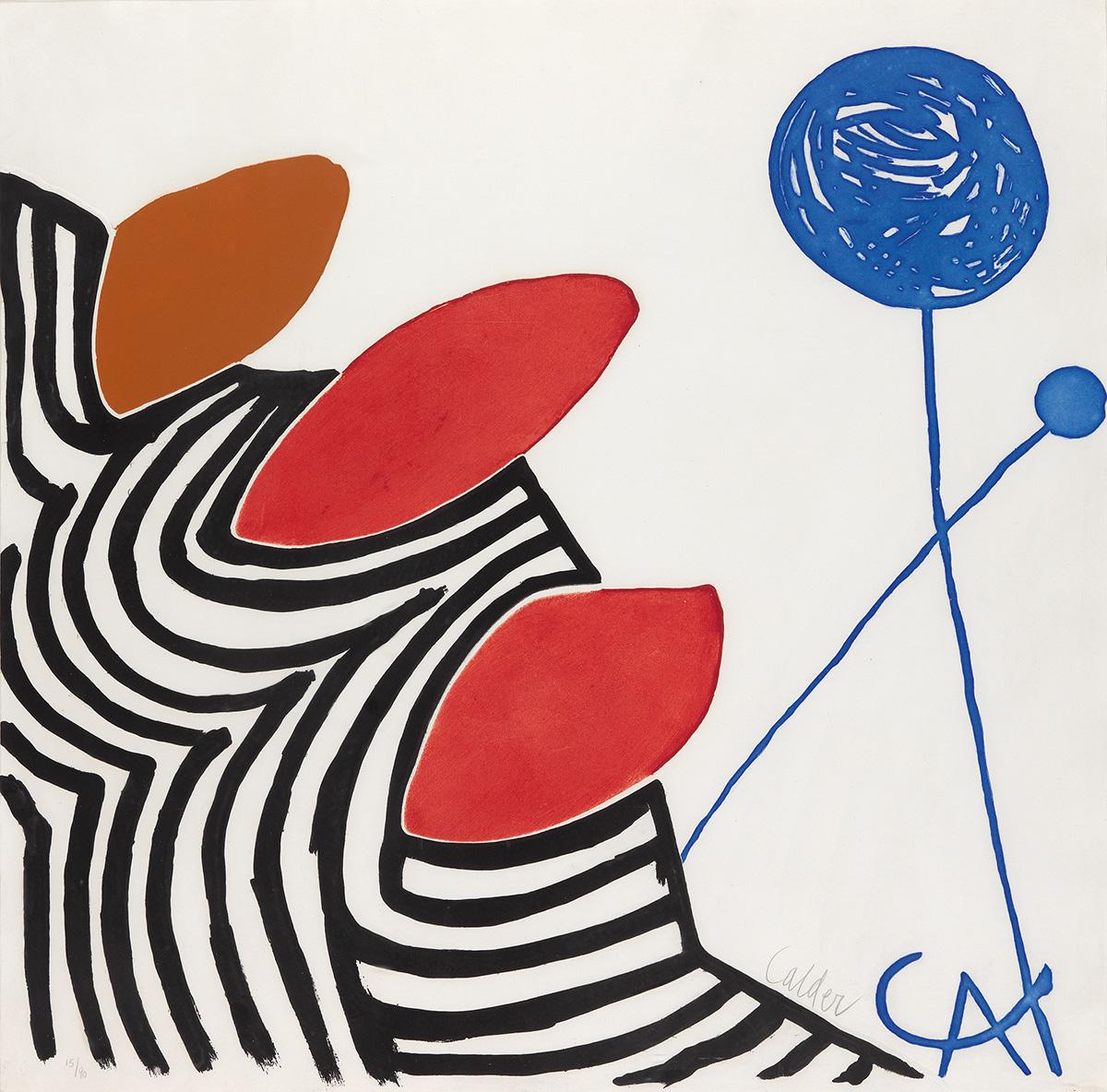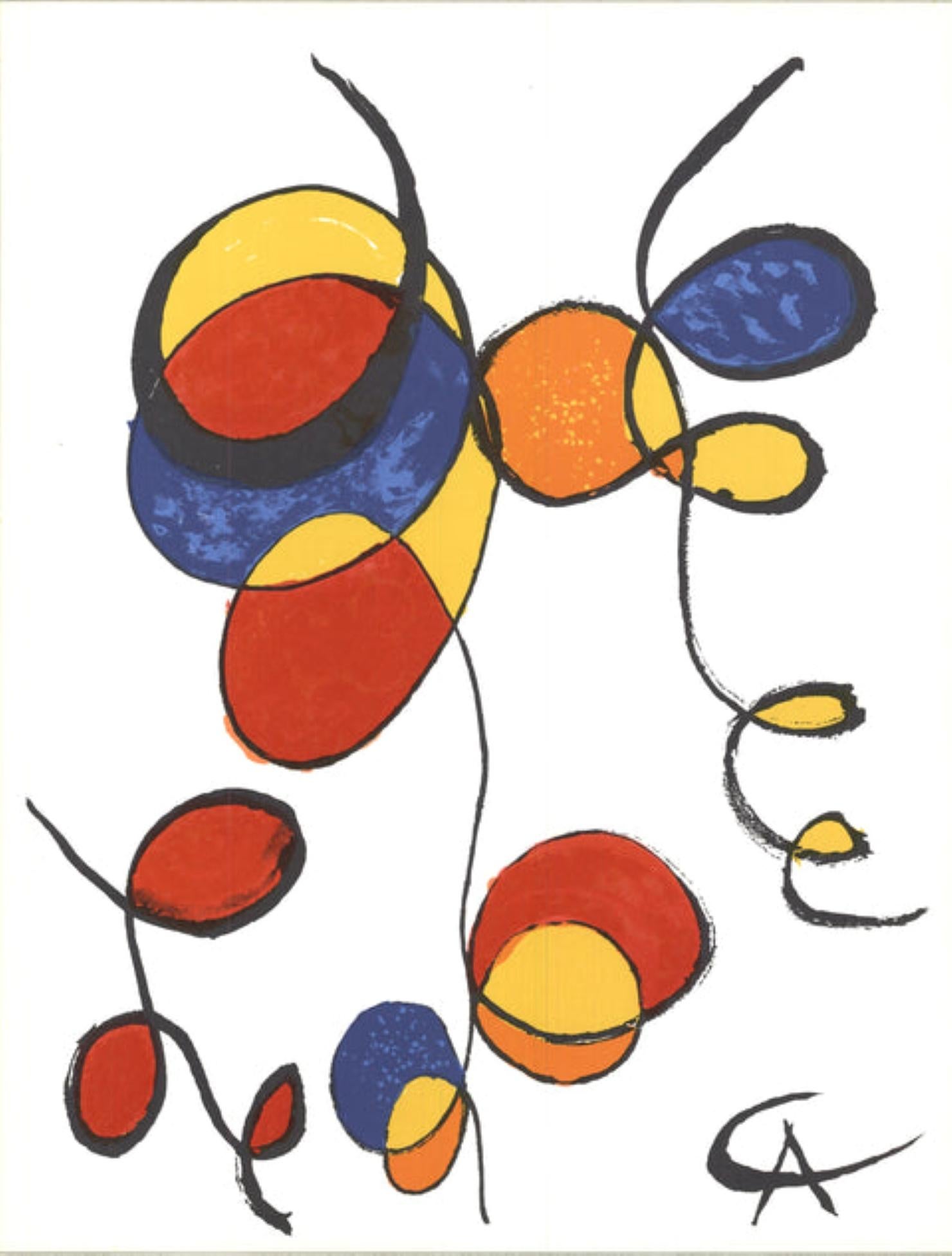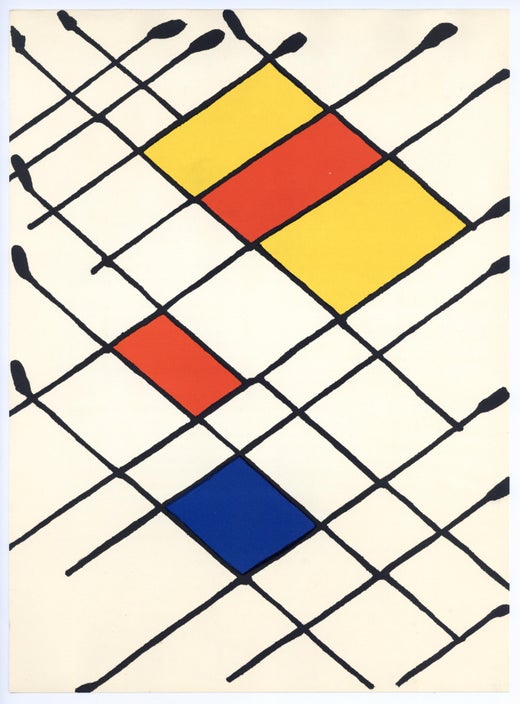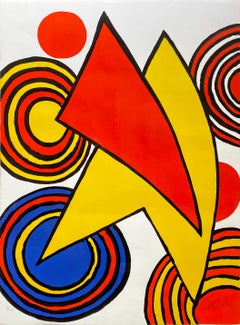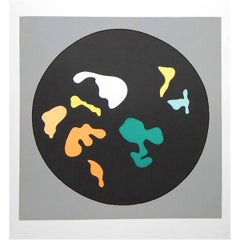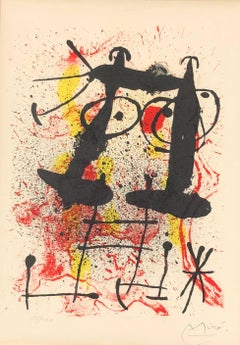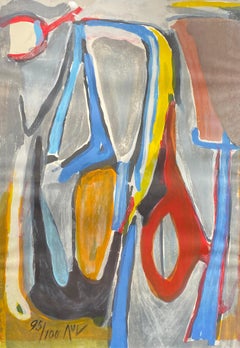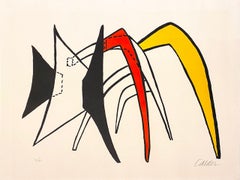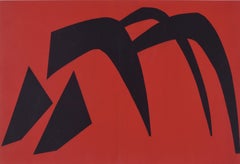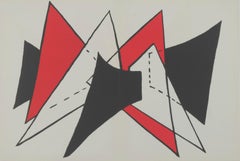Video Loading
Want more images or videos?
Request additional images or videos from the seller
1 of 9
(after) Alexander CalderCalder Stabiles
Price Upon Request
Price Upon Request
Price Upon Request
Price Upon Request
Price Upon Request
Price Upon Request
Price Upon Request
Price Upon Request
Price Upon Request
Price Upon Request
About the Item
Calder Stabiles
Galerie Maeght Fine Art Poster Print
30 x 22 inches
31 x 23 inches with frame
Alexander Calder (American, 1898-1976)
One of America's best known sculptors, "Sandy" Calder became most famous for his kinetic abstract mobiles. He also did floor pieces, was a painter in watercolor, oil and gouache, did etchings and serigraphs, and made jewelry and tapestries as well designed theater stage settings and architectural interiors.
His art reflects his reputation of being a beloved, decent human being who continually searched for fun and humor in that around him. He was highly independent from luxuries and focused on creativity. His last words, "I'll do it myself", tell the story of his life.
He was born in Philadelphia, the son of Alexander Sterling Calder and the grandson of Alexander Milne Calder, well-known sculptors of public monumental works. His mother, Nanette Lederer Calder, was a professional portrait painter. Obviously he was nurtured in an environment of art, and from an early age, he was making figures from found objects. Because of the father's ill health and the necessity for a drier climate, the family moved to Oracle, Arizona in 1905, and five years later to Pasadena, California. When Sandy was a teenager, the family returned to Pennsylvania.
He was unable to make a decision about a vocation, but his fascination with machines led to his earning a degree in mechanical engineering from the Stevens Institute of Technology in 1919. He tried a variety of jobs including working in the boiler room of a cruise ship. In 1923, he enrolled in the Art Students League in New York City, where his teachers were John Sloan, Guy Pene Du Bois, and Boardman Robinson. In classes there he did numerous oil paintings and also humorous drawings of sporting events for the National Police Gazette.
In 1925, he produced an illustrated book titled Animal Sketching, one-line drawings that foreshadowed his early wire sculptures of figures and animals. In 1926, encouraged by an engineer friend of his father to follow his talent, he went to Paris where he lived the next seven years and shortly after his arrival began doing wire sculpture. During this period, his mother gave him seventy-five dollars a month for living expenses.
He assembled a "Circus," of miniature, hand activated one-wire figures with which he gave performances in his studio. These pieces were made by bending and twisting a single wire into humorous portraits, animals, and figure groups.
He also met many of the leading avant-garde artists of the day including Piet Mondrian, who influenced Calder's geometric, non-objective constructions that he began producing in 1931. His floor pieces, named "stabiles" by Jean Arp, were exhibited in a gallery exhibition organized by Marcel Duchamp, who coined the word "mobile" for the hanging, kinetic pieces. Soon, Calder was creating many of these wind-driven works.
Calder's mobiles were first shown in the United States in 1932, and the next year he returned to America and purchased a home in Roxbury, Connecticut where he lived the remainder of his life and gained much attention from that time.
Dancer Martha Graham used several of his sculptures in her modern dance performances, and personnel at the Museum of Modern Art in New York began purchasing pieces from him including his first large-scale piece called Whale in 1937.
During World War II when metal was scarce, he made mobiles and stabiles from carved, painted wood, and in the early 1950s he added to his repertoire wall pieces and mobiles that incorporated sound. Many federal agencies and businesses commissioned works by him, and most major American museums have his pieces in their collections.
His death in 1976 occurred coincidentally with a major retrospective of his work at the Whitney Museum of American Art in New York.
- Creator:(after) Alexander Calder (1898, American)
- Dimensions:Height: 30 in (76.2 cm)Width: 22 in (55.88 cm)
- Movement & Style:
- Period:
- Condition:
- Gallery Location:Missouri, MO
- Reference Number:1stDibs: LU747314093942
(after) Alexander Calder
Combining abstract surrealism and biomorphic imagery into a distinctive style, Calder has become one of the 20th Century’s most iconic and important artists. Besides sculptures, Calder was also prolific in other art forms. He produced jewelry, tapestry and stage designs, as well as drawings, oil paintings, water colors, etchings, lithographs and serigraphs. Born in Philadelphia in 1898
Alexander Calder (1898 – 1976) was a monumental artist. He invented the mobile, and airy, hanging structure connected by wires that are set in motion by the wind. These mobiles tremendously influenced the art world. Calder’s versions celebrated form and color, with simplicity and profundity. As a trained engineer, began to practice as a freelance artist after attending New York’s Art Students League. Calder was strongly inspired circus spectacle, and thus constructed entertaining mobiles often accompanied by music. Producing dynamic yet playful mobile sculptures, Calder dismissed the formal structures of art and redefined its infinite possibilities.
About the Seller
5.0
Vetted Professional Seller
Every seller passes strict standards for authenticity and reliability
Established in 1970
1stDibs seller since 2017
156 sales on 1stDibs
Typical response time: Several days
- ShippingRetrieving quote...Shipping from: Missouri, MO
- Return Policy
More From This Seller
View AllThe Triangles and Spiral
By Alexander Calder
Located in Missouri, MO
The Triangles and Spiral, 1973
By. Alexander Calder (American, 1898-1976)
Signed Lower Right
Numbered: 66/150
Unframed: 26 x 19.25 inches
Framed: 34 x 27 inches
Alexander Calder was born in Philadelphia in 1898. After obtaining his mechanical engineering degree from the Stevens Institute of Technology, Calder worked at various jobs before enrolling at the Art Students League in
New York City in 1923. During his student years, he did line drawing for the National Police Gazette.
In 1925, Calder published his first book, Animal Sketches...
Category
1970s Abstract Abstract Prints
Materials
Color, Lithograph
Price Upon Request
Soleil Recercle
By Hans (Jean) Arp
Located in Missouri, MO
Soleil Recercle
Color woodcut, 1966, on wove,
Signed and Numbered ed. 50
Cat. Rais. Arntz
Sheet Size: approx. 22 x 17.5 inches
Framed Size: approx. 24 x 20 inches
Jean Arp was a p...
Category
1960s Modern Abstract Prints
Materials
Woodcut
Hai-Ku Series
By Joan Miró
Located in Missouri, MO
Color Lithograph
Ed. 15/100
Signed and Numbered
Category
1960s Abstract Abstract Prints
Materials
Lithograph
Price Upon Request
Abstract (Edition 95/100)
By Bram Van Velde
Located in Missouri, MO
Abstract (Edition 95/100)
By Bram Van Velde (1895-1981)
Numbered Lower Left
Signed Lower Center
Unframed: 37" x 24"
Framed: 37.5" x 25.25"
Bram (Abraham Gerardus) van Velde was a Dutch painter known for an intensely colored and geometric semi-representational painting style related to Tachisme*, and Lyrical Abstraction*. He is often seen as member of the School of Paris* but his work resides somewhere between expressionism* and surrealism*, and evolved in the 1960s into an expressive abstract art. His paintings from the 1950s are similar to the contemporary work of Matisse, Picasso and the abstract expressionist Adolph Gottlieb. He was championed by a number of French-speaking writers, including Samuel Beckett and the poet André du...
Category
20th Century Abstract Abstract Prints
Materials
Lithograph
Price Upon Request
Abstract (Edition 24/75)
By Bram Van Velde
Located in Missouri, MO
Abstract (Edition 24/75)
By Bram van Velde (1895-1981)
Signed and Numbered Bottom Center
Without Frame: 37" x 24"
With Frame: 37.75" x 24.75"
Bram (Abraham Gerardus) van Velde was a Dutch painter known for an intensely colored and geometric semi-representational painting style related to Tachisme*, and Lyrical Abstraction*. He is often seen as member of the School of Paris* but his work resides somewhere between expressionism* and surrealism*, and evolved in the 1960s into an expressive abstract art. His paintings from the 1950s are similar to the contemporary work of Matisse, Picasso and the abstract expressionist Adolph Gottlieb. He was championed by a number of French-speaking writers, including Samuel Beckett and the poet André du...
Category
20th Century Abstract Abstract Prints
Materials
Lithograph
Price Upon Request
Gaudi XX, (D. 1079)
By Joan Miró
Located in Missouri, MO
Gaudi XX, (D. 1079), 1979
By. Joan Miro
Signed Lower Right
Edition 41/50 Lower Left
Unframed: 37.5" x 30.75"
Framed: 46.5" x 39"
Joan Miro was born in Barcelona, Spain on April 20, 1893, the son of a watchmaker. From 1912 he studied at the Barcelona Ecole des Beaux-Arts and the Academie Gali. In the first quarter of the 20th century, Barcelona was a cosmopolitan, intellectual city with a craving for the new in...
Category
20th Century Abstract Abstract Prints
Materials
Paper, Etching, Aquatint
Price Upon Request
You May Also Like
Stabiles
By Alexander Calder
Located in Miami, FL
Alexander Calder
Stabiles, circa 1970
Color lithograph, signed and numbered in pencil from an edition of 150
Published by Maeght éditeur, Paris; printed at Atelier Fernand Mourlot...
Category
1970s Prints and Multiples
Materials
Lithograph
'Stabiles'
By Alexander Calder
Located in New York, NY
Alexander Calder’s ‘Stabiles’ lithograph captures the essence of his sculptural works known as "stabiles"—stationary counterparts to his mobiles—through a bold, abstract visual langu...
Category
1960s Abstract Geometric Abstract Prints
Materials
Lithograph
Untitled
By Alexander Calder
Located in Fairlawn, OH
Untitled
Color lithograph, 1959
Unsigned (as issued)
From: Derriere Le Miroir, No. 113, 1959
Publisher: Editions Pierre a Feu
Editor: A. Maeght
Small edition as it appeared in the ma...
Category
1950s Abstract Abstract Prints
Materials
Lithograph
Untitled
By Alexander Calder
Located in Fairlawn, OH
Untitled
Color lithograph, 1963
Unsigned (as issued)
From:Derriere le Miroir, Volume 141
Large unsigned edition
Printed by Mourlot, Paris
Published by Aime Maeght, Paris
Condition: C...
Category
1960s Abstract Abstract Prints
Materials
Lithograph
Presenza Grafica
By Alexander Calder
Located in New York, NY
Large, scarce limited edition color aquatint by Alexander Calder, from a limited edition of 90. Signed by Calder and numbered in pencil. Printed and published by 2RC Edizioni d'Art...
Category
1970s Abstract Abstract Prints
Materials
Aquatint
Spirales By Alexander Calder
By Alexander Calder
Located in Dubai, Dubai
Spirales
By Alexander Calder
1974
Medium: Lithograph
Paper Size: 15 x 11.5 inches ( 38 x 29 cm )
Image Size: 15 x 11.5 inches ( 38 x 29 cm )
Edition Size: 500
Category
1970s Contemporary Figurative Prints
Materials
Lithograph
More Ways To Browse
Used Boilers
Mobile Stabile
Hanging Mobile
Vintage Hanging Mobile
Early 20th Century Machine Made Tapestry
Vintage Boiler
Felipe Pantone
Frank Stella Poster
George Braque Signed Print
Henri Epstein
Henri Gaudier Brzeska
Irwin Hollander
Jean Michel Basquiat Signed
Jim Dine Signed 8 Hearts
Joan Miro Carborundum
John Chamberlain On Sale
Marcel Mouly Signed Print
Michael Abramson
